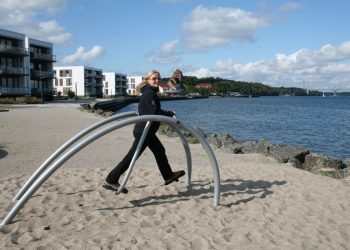Complications of Ignoring a Dead Tooth: Understanding the Dangers of Untreated Dead Teeth
Complications of Ignoring a Dead Tooth:
- Infection and Abscess Formation: When a tooth dies, bacteria can invade the pulp chamber and cause an infection. This can result in a painful dental abscess, leading to swelling, pus formation, and potential damage to surrounding tissues.
- Spread of Infection: Untreated infections can spread from the dead tooth to nearby structures, such as the jawbone, sinuses, or even into the bloodstream. This can give rise to severe systemic complications, including systemic infections, sepsis, or infective endocarditis.
- Chronic Pain and Discomfort: Dead teeth can cause persistent pain and discomfort, ranging from mild to severe. The pain may be intermittent or constant, and it can radiate to neighboring teeth, the jaw, or the face. Ignoring the pain can impact your overall quality of life and daily activities.
- Gum Disease: Dead teeth can contribute to the development of gum disease. The bacterial infection from the dead tooth can spread to the surrounding gums, leading to inflammation, gum recession, and ultimately, periodontal disease.
- Tooth Loss: Neglecting a dead tooth increases the risk of tooth loss. As the infection progresses, it can weaken the supporting structures of the tooth, including the periodontal ligament and the jawbone. This can result in tooth mobility and eventually lead to tooth loss.
- Aesthetic Concerns: Dead teeth can become discolored, turning grayish or black. This can significantly impact the appearance of your smile and lower your self-confidence. Ignoring a dead tooth can cause aesthetic concerns that require more extensive and costly cosmetic treatments in the future.
- Systemic Health Issues: Poor oral health, including untreated dead teeth, has been linked to various systemic health problems. Research suggests potential associations between oral infections and conditions such as cardiovascular disease, diabetes, respiratory infections, and adverse pregnancy outcomes.
- Difficulty Eating and Speaking: Dead teeth can affect your ability to chew and bite properly, leading to discomfort and difficulty eating certain foods. In some cases, the decay or infection from the dead tooth can also affect speech, causing difficulties in pronunciation and communication.
- Functional Complications: Neglected dead teeth can cause functional issues, such as malocclusion (improper alignment of the teeth), jaw joint disorders (TMJ), and uneven wear of the remaining teeth. These complications may require orthodontic treatment or extensive restorative work to correct.
- Increased Treatment Complexity and Costs: Delaying treatment for a dead tooth can result in more complex dental procedures down the line. As the infection progresses, it may involve neighboring teeth, necessitating multiple extractions or extensive dental work. This can significantly increase the costs associated with restoring your oral health.
Treatment Options for a Dead Tooth: Restoring Health and Function
Treatment Options for a Dead Tooth:
- Root Canal Therapy: Root canal therapy is a commonly recommended treatment for a dead tooth. It involves removing the infected or necrotic dental pulp from the inside of the tooth and cleaning the root canals. Afterward, the canals are filled with a biocompatible material, and a dental crown is often placed to protect and strengthen the tooth.
- Extraction: In some cases, when a dead tooth is extensively damaged or poses a risk to the surrounding teeth and tissues, extraction may be necessary. Extraction involves the complete removal of the dead tooth from its socket. Once the tooth is extracted, replacement options such as dental implants or bridges can be considered to restore function and aesthetics.
- Dental Implants: Dental implants are a popular and durable option for replacing a dead tooth after extraction. A dental implant consists of a titanium post that is surgically inserted into the jawbone, serving as an artificial tooth root. After the implant integrates with the bone, a crown is placed on top, providing a natural-looking and functional replacement for the dead tooth.
- Dental Bridges: Dental bridges are another option for replacing a dead tooth. They involve using the adjacent teeth as support for an artificial tooth (pontic) that fills the gap left by the dead tooth. Dental bridges are custom-made to match the color and shape of your natural teeth, restoring both aesthetics and functionality.
- Removable Dentures: Removable dentures are an option when multiple teeth, including a dead tooth, need to be replaced. Dentures can be used to replace several missing teeth in the upper or lower arch. They are removable and are usually made from a combination of acrylic and metal to provide stability and improve chewing and speech abilities.
- Restorative Dentistry: Restorative dentistry encompasses various treatments that aim to repair and restore the function of a dead tooth. Depending on the severity of the damage, restorative procedures such as dental fillings, dental crowns, inlays, or onlays may be recommended. These treatments can strengthen and protect the tooth while restoring its natural appearance.
- Cosmetic Dentistry: If the dead tooth has caused significant discoloration or aesthetic concerns, cosmetic dentistry procedures can help enhance your smile. Options like teeth whitening, dental veneers, or bonding can improve the appearance of the dead tooth and create a harmonious and attractive smile.
- Regular Dental Check-ups and Oral Hygiene: Preventive measures play a vital role in maintaining healthy teeth and preventing dead tooth conditions. Regular dental check-ups, coupled with good oral hygiene practices, can help detect and address any dental issues early on, reducing the likelihood of a dead tooth occurring.
Conclusion
Ignoring a dead tooth can have serious consequences for your oral health. Dead teeth are typically the result of trauma, infection, or decay, and they can cause a range of complications if left untreated. These complications may include persistent pain, abscess formation, gum disease, bone loss, and even systemic health issues.
Fortunately, several treatment options are available for dead teeth. The most common approach is root canal therapy, which involves removing the infected or dead tissue from the tooth’s pulp chamber and sealing it to prevent further infection. In cases where the tooth is extensively damaged or cannot be saved, extraction may be necessary. After extraction, various replacement options such as dental implants, bridges, or dentures can be considered to restore both function and aesthetics.
It is important to address a dead tooth promptly to prevent further damage and potential complications. Regular dental check-ups are crucial for early detection and timely treatment. Consulting with a dentist is essential to determine the most suitable course of action based on the specific condition of the tooth. By seeking appropriate treatment, you can preserve your oral health and overall well-being.READ MORE INFO ABOUT LEARN RATING






